- Home
- TV History
- Network Studios History
- Cameras
- Archives
- Viewseum
- About / Comments
Skip to content
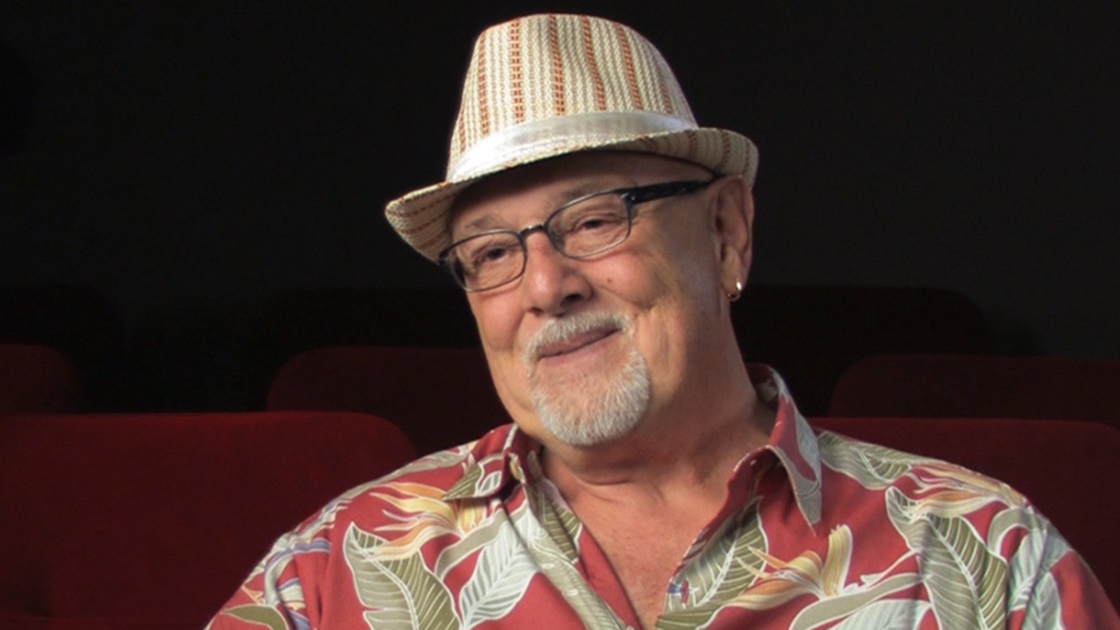

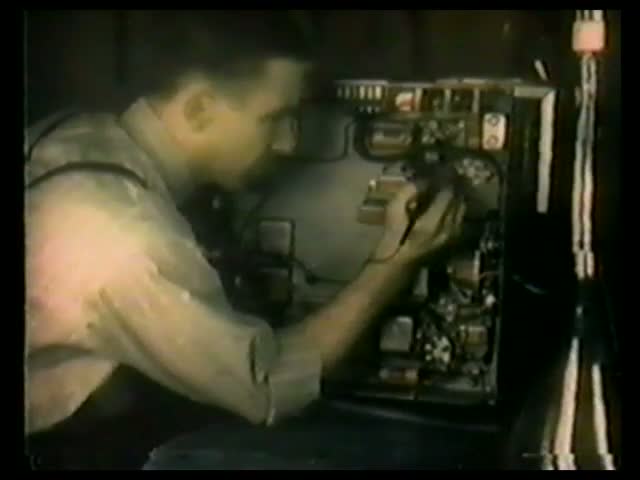



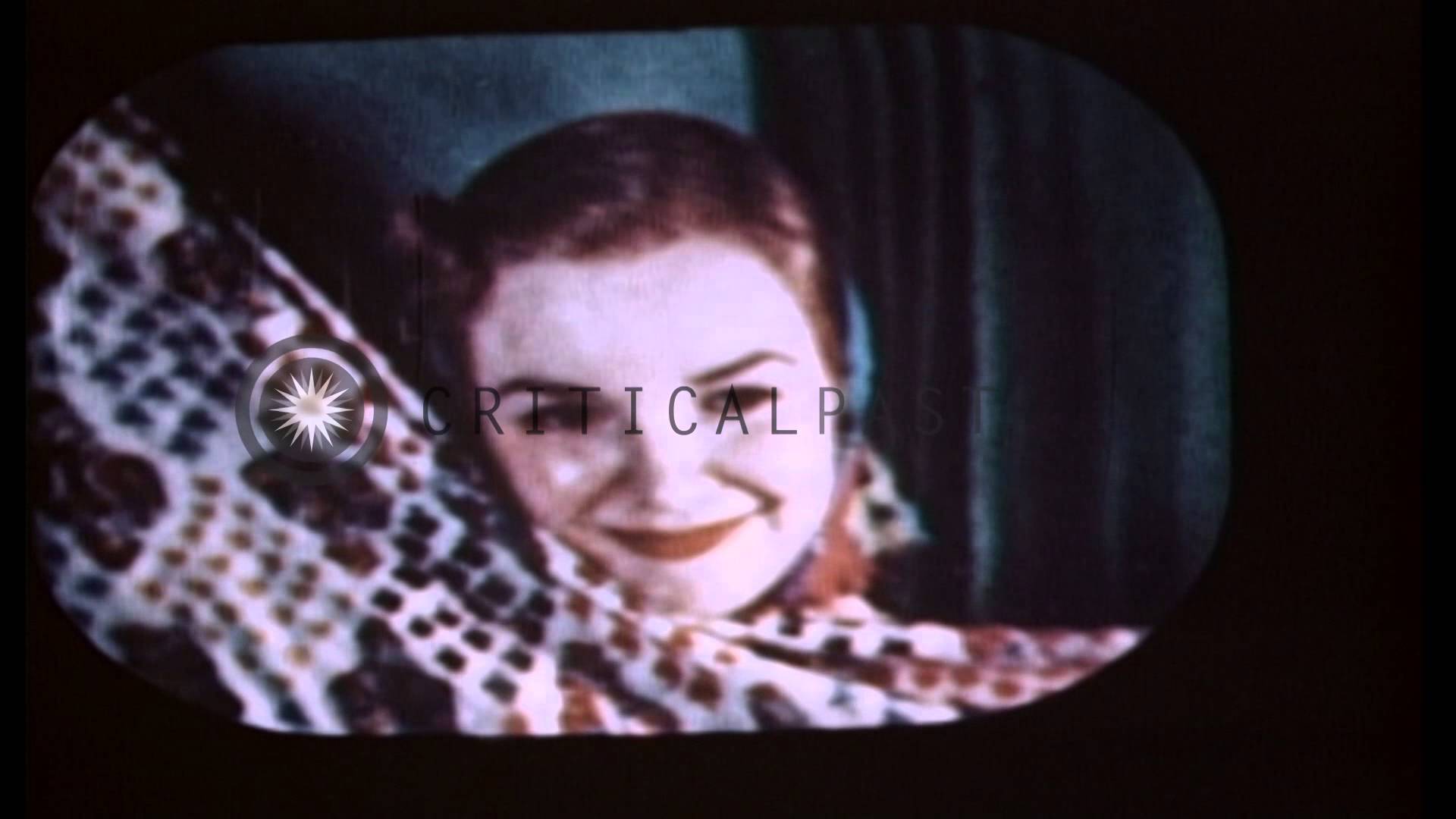

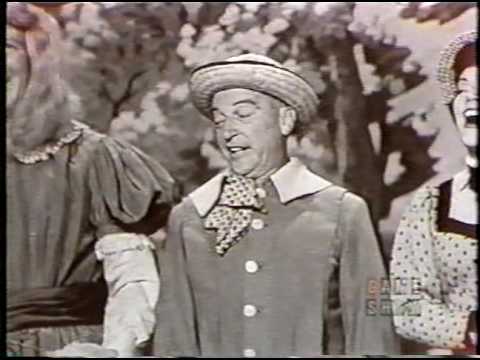

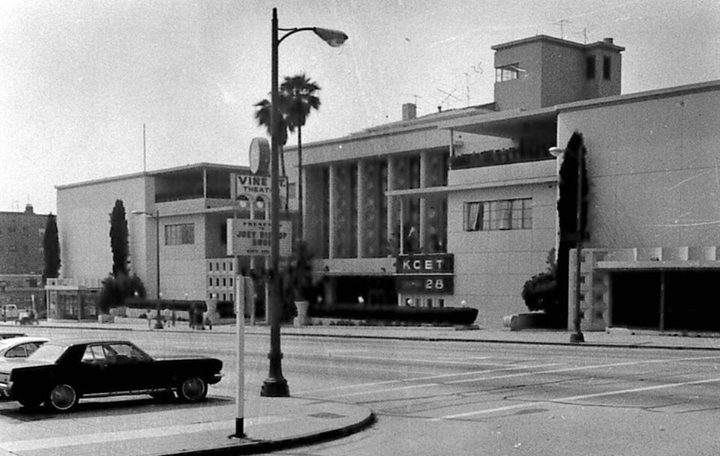



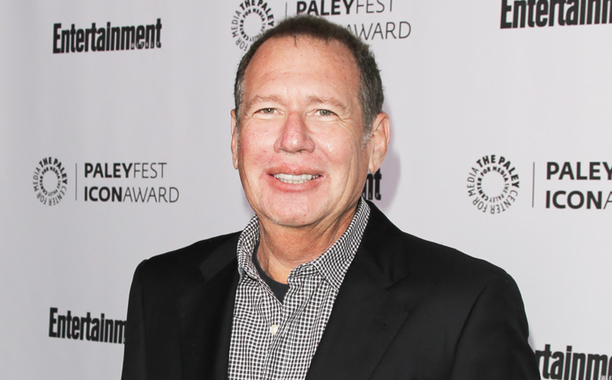

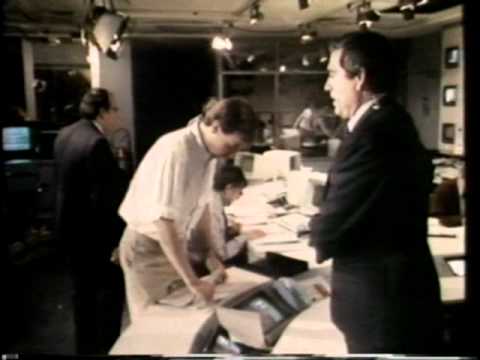









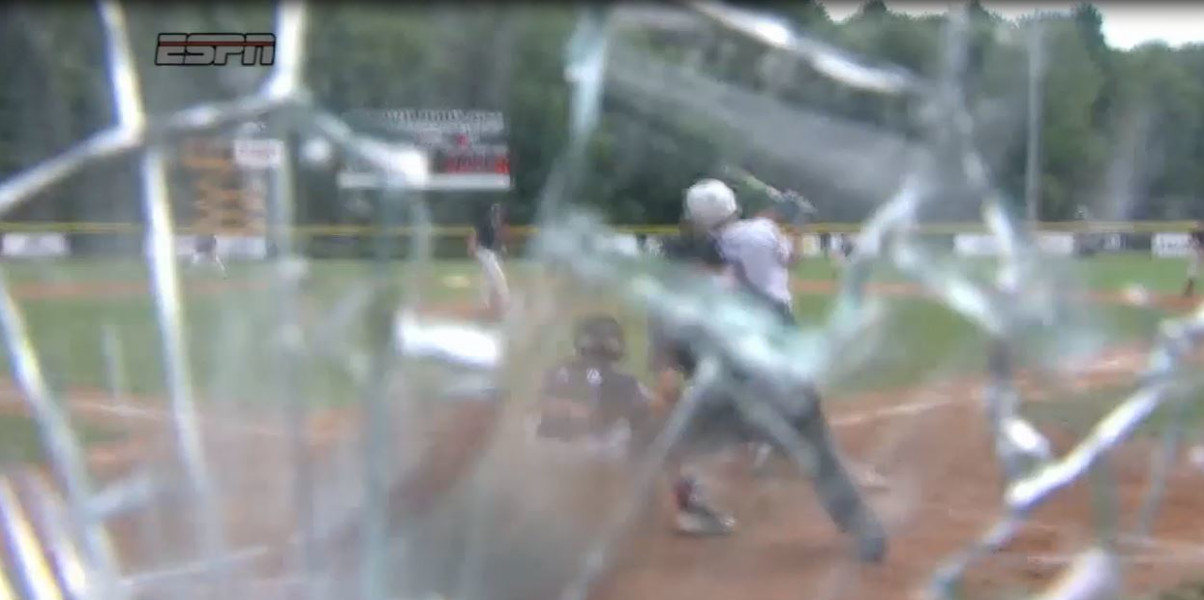

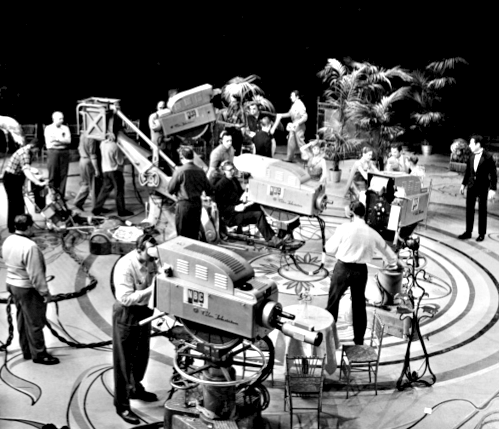

This October 1956 issue gives us stories, all the way back to the first issue in October of 1931, with tons of “new” stories too, on color television, new TV studios for several stations, and much more.






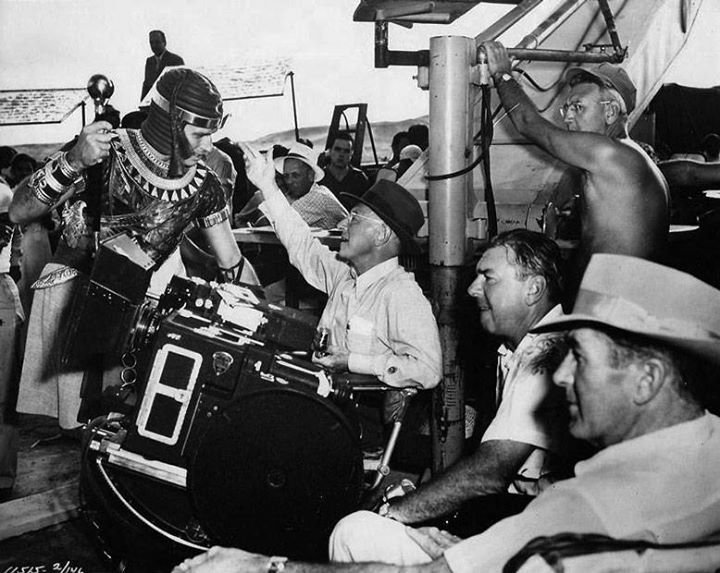

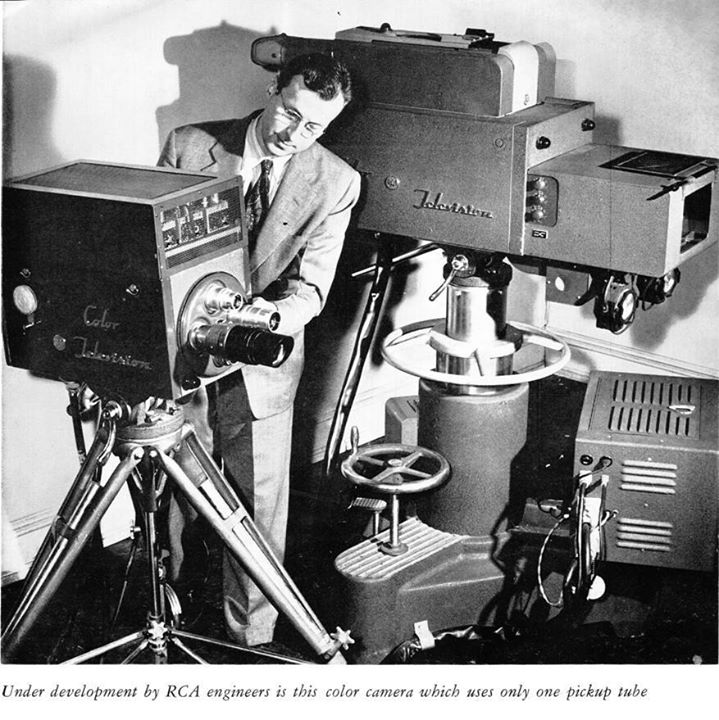

Posts in Category: TV History
Page 18 of 136
« Previous
1
2
3
4
5
6
7
8
9
10
11
12
13
14
15
16
17
18
19
20
21
22
23
24
25
26
27
28
29
30
31
32
33
34
35
36
37
38
39
40
41
42
43
44
45
46
47
48
49
50
51
52
53
54
55
56
57
58
59
60
61
62
63
64
65
66
67
68
69
70
71
72
73
74
75
76
77
78
79
80
81
82
83
84
85
86
87
88
89
90
91
92
93
94
95
96
97
98
99
100
101
102
103
104
105
106
107
108
109
110
111
112
113
114
115
116
117
118
119
120
121
122
123
124
125
126
127
128
129
130
131
132
133
134
135
136
Next » Doug Quick Interview…Veteran CBS Stage Manager, “Price Is Right”
On August 21, 2016
- TV History
Sunday Matinee #2…Veteran Stage Manager Doug Quick, BTDT
BTDT = Been There, Done That, and where television is concerned, that pretty much sums it up for 45 year veteran Stage Manager Doug Quick, who’s been running “The Price Is Right” for 35 years. There are lots of great war stories in nearly 7 hours of video.
In a career spanning 45 years, Doug Quick has stage managed a variety of programs for both NBC and CBS and has worked with such legendary figures as Red Skelton, Johnny Carson, Frank Sinatra, Muhammad Ali, Bob Barker, and Carroll O’Connor.
Doug Quick began his production career in the prestigious NBC Page Program in 1969, which included training as Carson’s personal page on “The Tonight Show Starring Johnny Carson”, and as a page on “The Dean Martin Show”. Quick’s enthusiasm, determination and strong work ethic secured him a PA job on Martin’s show, which led to a position as an NBC staff stage manager, where he worked alongside respected stage managers Jerry Masterson and Ted Baker.
Transitioning to freelance in the mid-1970s, Quick worked on “Sanford and Son”, “The Redd Foxx Show”, “The Flip Wilson Show”, “The Dinah Shore Show” and more before becoming a CBS staff stage manager in 1976. Other notable programs he was assigned to include “Archie Bunker’s Place” and a myriad of now classic game shows including “Match Game”, “Family Feud”, “The $25,000 Pyramid”, and the longest running game show in television history, “The Price is Right”, which he has stage managed for more than 35 years. Enjoy and share! -Bobby Ellerbee
http://www.dga.org/Craft/VisualHistory/Interviews/Doug-Quick.aspx?Filter=Full+Interview
Doug Quick – Visual History Interview
Veteran stage manager Doug Quick (The Price is Right; Archie Bunker’s Place; The Young and the Restless) discusses his creative contributions to episodic programming, daytime serials and variety shows, and the extensive rehearsal and planning that goes into the production of game shows.


GREAT WEST COAST TV HISTORY VIDEO
On August 21, 2016
- TV History
Sunday Matinee #1…GREAT WEST COAST TV HISTORY VIDEO
In this KTLA 40th Anniversary presentation, there are so many firsts, they are nearly impossible to list, but Bob Hope, Steve Alan, Dinah Shore, Betty White, and many others do a remarkable job of narrating this 2 hour show. Filled with rare film and kinescopes, this is the story of how television developed on the west coast, and includes not just KTLA’s history, but other early stations there too. Enjoy and share! -Bobby Ellerbee
August 19, 1906…The Father Of Electronic Television Was Born
On August 19, 2016
- TV History
August 19, 1906…The Father Of Electronic Television Was Born
110 years ago today, Philo Taylor Farnsworth was born in Beaver, Utah. By age 14, he had worked out the principles for the Image Dissector tube which occurred to him while plowing back and forth on the family farm.
The video at this link was done by his great granddaughter, Jessica Farnsworth and is full of rare color film of some of Philo’s first demonstrations in San Francisco and Philadelphia and is well worth the ten minutes it takes to watch.
The photo below was taken after Farnsworth’s only appearance on the technology he created. In June of 1957, he was a guest on ‘I’ve Got A Secret’ and this clip is loaded to start at the beginning of his segment. http://youtu.be/3cspYZyGp1A?t=13m21s
The lady is his wife and assistant, Pem Farnsworth. Enjoy and share! – Bobby Ellerbee


August 19, 1949…First CBS Color Test Footage Shot
On August 19, 2016
- TV History
August 19, 1949…First CBS Color Test Footage Shot
The day before this, CBS did their first experimental color broadcast in Washington, D.C. for the FCC using the system they were building for Smith, Kline & French which was to be used in operating rooms for medical teaching.
The next week, on August 25, RCA announced their Dot Sequential color system which is the one we used today. CBS was making color with a system that used a spinning red, blue and green color wheel on the cameras and receivers, so the CBS system was mechanical where the RCA system was all electronic. For more of the chronology on the early days of color systems, here is a link to Ed Reitan’s great research. https://www.earlytelevision.org/Reitan/index.html
Below is three minutes of the oldest known color recording (on film, but not a kinescope) of a CBS Field Sequential color television test featuring a lady holding colorful scarves. A small low quality sample of this footage has been on the web for many years, this version is full 3 min worth in HD. Thanks to Troy Walters in Australia for bringing this to us. Enjoy and share! -Bobby Ellerbee
#t=15″ target=”_blank”>https://www.youtube.com/watch?v=O5tf6SQjFlQ #t=15
Link to order this clip: http://www.criticalpast.com/video/65675075009_color-television-broadcast_Columbia-Broadcasting-Systems_Color-Television-Monitor-Tube…


Come Play Along With A Special Episode Of “To Tell The Truth”
On August 18, 2016
- TV History
Come Play Along With A Special Episode Of “To Tell The Truth”
Can you guess which one is the real Ken Whalen? I’ve read his book and I couldn’t guess, so play along, and there is a surprise for Gary Moore at the end.
Ken was a director and associate director in the Golden Age and worked with Ed Sullivan, Jackie Gleason, Red Buttons, Gary Moore, Perry Como and lot of early game shows like “Strike It Rich” and many more.
His book “How the Golden Age of Television Turned My Hair to Silver: The Mad Memories of an Ex-Television Director”, is a must read. It is loaded with behind the scenes memories, bloopers and very interesting stories of live television in the 1950s.
Thanks to Barry Mitchell for sharing the link. Let us know if you guess the right one. Peggy Cass has some great questions, as do most of the panel members. Enjoy! -Bobby Ellerbee
In the 2nd half of this episode of To Tell the Truth, we get a partial reunion of several cast members from Garry Moore’s old variety series the Garry Moore …
1313 Vine Street Studios Debut & TV’s Top Shows Follow
On August 18, 2016
- TV History
August 18, 1948…Vine Street Studios Debut
Did you know this was originally the home of The Don Lee – Mutual Network? Or, that this is the first place Johnny Carson ever went on network television? This was also the home of “The Dating Game”, “The Joey Bishop Show”, and more.
The building, at 1313 Vine Street in Hollywood, was constructed in 1948 as a radio and television studio facility at a cost of $3 million. The dedication of the Don Lee-Mutual Broadcasting building was held on August 18, 1948. It is the oldest surviving structure in Hollywood that was originally designed specifically with television in mind. As you can see from the layout image, it was huge and very well planned.
Cadillac dealer Don Lee got into broadcasting to stay competitive with his friend Earle C. Anthony, a Packard dealer, who bought radio station KFI as a method of appealing to his customers. Lee bought KFRC in San Francisco and KHJ in Los Angeles, ultimately building the chain to 12 West Coast stations. Though named for him, Lee, who had died 14 years earlier, never saw this building.
The building was the original home of Los Angeles Channel 2, which is now KCBS-TV, through the 1950s. KCBS-TV is one of the oldest television stations in the US. It was signed on by Don Lee Broadcasting, and was first licensed by the FCC as experimental television station W6XAO in June 1931. The station went on the air on December 23, 1931, and by March 1933 was broadcasting programming one hour each day only on Monday through Saturdays.
During World War II, programming was reduced to three hours, every other Monday. The station’s frequency was switched from Channel 1 to Channel 2 in 1945 when the FCC decided to reserve Channel 1 for low-wattage community television stations. The station was granted a commercial license (the second in California, behind KTLA) as KTSL on May 6, 1948, and was named for Thomas S. Lee, the son of Don Lee.
Don Lee’s broadcasting interests were placed for sale in 1950 following the death of Thomas S. Lee. General Tire and Rubber agreed to purchase all of Don Lee’s stations, but General Tire chose to sell KTSL, and the building at 1313 Vine Street to CBS. On October 28, 1951, KTSL changed its call-sign to KNXT to coincide with CBS’ Los Angeles radio outlet, KNX (1070 AM). In April of ’84, it became KCBS.
These are the studios where Johnny Carson’s earliest mid-’50s television appearances, including “Carson’s Cellar” and “The Johnny Carson Show” were done.
ABC bought the building from CBS around 1967, installed GE color cameras and produced shows like “The Joey Bishop Show”, “The Dating Game” and “The Newlywed Game” from 1313 Vine Street.
Today, it is the home of the Academy of Motion Picture Arts and Science’s Pickford Center for Motion Picture Study. It was dedicated in honor of legendary silent film actress Mary Pickford in 2002. Pickford was one of the founding members of the Academy. Enjoy and share! -Bobby Ellerbee


The Sound Effects Genius Behind The Looney Tunes And Merrie Melodies
On August 17, 2016
- TV History
If It Sounds Funny…You Can Thank Treg Brown!
For all of us that grew up with the great cartoons of the 40s, 50s and 60s, here’s a nice story on the man behind the silly sounds, that were such a big part of the fun. The two videos in the attached artilce are full of thing’s you’ve heard all your life…now you know who to thank. Enjoy! -Bobby Ellerbee
Back in the good old days of showbiz, sound effects were created by foley artists who made a racket and recorded their sounds right on the spot, without any digital help or enhancement. And when it came to cartoon sound effects there was one man who made that madcap racket we all know and love from t…
‘The Larry Sanders Show’ reruns returning to HBO this fall
On August 17, 2016
- TV History
Mark You Calendar! “The Larry Sanders Show” Returns September 23!
It doesn’t appear that the show will have a time slot on the broadcast schedule, but it will at finally be available “on demand”. Hey Now! -Bobby Ellerbee
http://www.ew.com/article/2016/07/30/larry-sanders-show-hbo-return-premiere-date
‘The Larry Sanders Show’ reruns returning to HBO this fall
The entire six-season run of The Larry Sanders Show will return to HBO on Sept. 23, the network announced Saturday, making good on its promise in…


A Rare Look Inside CBS Studio 33…The Cronkite Newsroom
On August 17, 2016
- TV History
A Rare Look Inside CBS Studio 33…The Cronkite Newsroom
Although Dan Rather was now the anchor, Studio 33 is where Walter Cronkite first reported from, when they moved to the Broadcast Center in 1964.
Prior to the move, the newsroom and set was on the 23rd floor of the Graybar Building which was next to Grand Central, and the show was switched out of the old Studio 42. About a year after this video, the news moved to Studio 47.
The cameras here are Hitachi SK 110s and show us how frantic the pace is just before and during air. Stuffing a day of the world’s news into 22 minutes is not an easy task, and back then, the news was real news…not what we settle for now. By the way, this space is now occupied by CBS Radio. -Bobby Ellerbee
https://www.youtube.com/watch?v=BaLwvDsplMI
It’s Hari Kari Time
“Rocket Rangers”…The First Show With A Purposely Wiped History
On August 16, 2016
- TV History
“Rocket Rangers”…The First Show With A Purposely Wiped History
In 1953 and ’54, CBS had a Saturday morning show called “Rocket Rangers” that starred Cliff Robertson as Commander Rod Brown, in 58 episodes of the show. It was done live in New York, and given that Pye cameras were used, I would say this was done in one of the four CBS studios at Leiderkranz Hall. I think that is the only place CBS had Pye cameras, perhaps they only had them in one studio there.
CBS had “Tom Corbett, Space Cadet” for only a couple of months before it moved to ABC, then later DuMont, then later NBC. With space adventure shows at their peak of popularity in 1953, CBS hired Tom Corbett’s original director, John Haggott, and commissioned him to create a clone.
He did, and the result was Rod Brown (Cliff Robertson) of the Rocket Rangers. With the same director, same special effects gizmos, and many of the same writers, this was a somewhat livelier version of Space Cadet. Aliens were very rarely seen on Space Cadet, so Rod Brown gave us virtually a new alien every week. It was an interesting program and it is a shame that no kinescopes survive. Why not?
Well, it seems there was a “Perry Mason” moment in the show’s history. There are no surviving kinescopes of this show, because they were ordered by the court to be destroyed. Seems that the producers of “Tom Corbett, Space Cadet” on Dumont sued, because the characters and premise was too close to their story line. This is thought to be the first event of its kind in television.
Cliff Robertson was on Broadway at the time, and would rise on Saturdays at 4 a.m., drive to the CBS studios, go through dress rehearsal, and do the live broadcast at 11:30 a.m. EST. After the program he went over to the theater where he was performing in “Late Love” with Elizabeth Montgomery for a matinee, and then an evening show. By the end of the day, he would be “stumbling around”, as he later said. Robertson was also attending the Actors Workshop at the time. His salary for the part of “Rod Brown” was approximately $175 week. -Bobby Ellerbee


Larry Wilmore’s ‘Nightly Show’ Cancelled at Comedy Central
On August 15, 2016
- TV History
“Nightly Show” Canceled…Last Show Airs Thursday
Larry Wilmore’s ‘Nightly Show’ Cancelled at Comedy Central
“The Nightly Show with Larry Wilmore” will call it a day after Thursday’s episode. Comedy Central has canceled the half-hour series that replaced “The Colbert Report” on Jan. 19, 2015, making…


August 15, 1948…CBS Debuts First, Live Nightly News Broadcast
On August 15, 2016
- TV History
August 15, 1948…CBS Debuts First, Live Nightly News Broadcast
On this day in 1948, Douglas Edwards became the first, live daily anchor of a network news show. In the 3 minute video below, Dan Rather tells the story nicely, so take a look.
Just to be clear, there was news on CBS and NBC before this, but CBS was first do go with a live, daily 15 minute report. Before this at CBS, Edwards and others had done a live news show twice a week.
NBC was actually first with a daily network news show, but theirs was not live. The most widely celebrated dates in NBC news history are February 16, 1948, and February 16, 1949.
In February ’48 “The NBC Television Newsreel” debuted as a 10 minute weeknight newsreel which was narrated off camera by John Cameron Swayze. The next year, on February 16, Swayze moved in front of the camera and that began “The Camel News Caravan” as a live 15 minute nightly news show.
CBS had put Douglas Edwards on camera on May 3, 1948 in the twice-weekly days of the newscast, making him the permanent host, as the prior “revolving” host format was abandoned.
Both networks had done earlier local news that goes back to 1939, but that is a story for another day. -Bobby Ellerbee
https://www.youtube.com/watch?v=GzCjp8JAAgc
From CBS, an Evening News piece on the retirement of Douglas Edwards, the first CBS anchorman.


August 15, 1992…”The Larry Sanders Show” Debuts On HBO
On August 15, 2016
- TV History
August 15, 1992…”The Larry Sanders Show” Debuts On HBO
It’s hard to believe that it was 24 years ago this week, but it was.
Out of the box, they knew they had a hit with Garry Shandling’s new show. It took us behind the scenes of late night television in a way no one ever has, before or since. With sidekick Jeffrey Tambor as Hank Kingsley, and Rip Torn as the show’s producer as the key cast members, the list of guest stars that came to the show was a who’s who that rivaled the real late night shows.
The show was done at CBS Studio Center on Radford Avenue in Los Angeles and won more awards than you can shake a stick at! There were Writers Guild, Directors Guild, Golden Globes, Emmys, Cable Ace, Peabody, Critics awards and more given in the US, and even more from the UK and international committees. During its six-year run, The Larry Sanders Show won 24 major awards including three Emmys.
After the show ended (May 31,1998), the show received a spot on Time Magazine’s 100 Greatest Shows of All Time. In 2008, Entertainment Weekly ranked The Larry Sanders Show the 28th Greatest Show of the past 25 years. TV Guide named it the 38th Greatest Show of All Time.
Below is a clip from Season 1, Episode 1 called “The Garden Weasel”. In re release, the name of this debut episode was changed to “What Have You Done For Me Lately”. Hey Now! – Bobby Ellerbee
Clips of Larry Sanders reluctantly doing in-show advertisements for the Garden Weasel taken from the first episode of The Larry Sanders Show starring Garry S…


AGAIN? Little League World Series Batter Smashes Camera Lens
On August 14, 2016
- TV History
Since around 2006, this is the third or fourth time this has happened. Somehow, the Little League World Series playoffs have become he most dangerous place on earth for a home plate camera. You would think by now, someone would have added a Plexiglas shield to shoot through. If you’ve never seen a picture shot through a broken lens, you are about to. -Bobby Ellerbee
Jack Hopko Shatters Camera Behind Plate
Jack Hopko hits a foul ball that shatters the camera positioned behind home plate in the bottom of the 3rd inning
Source
Time Machine! 25th Anniversay Issue, RCA Broadcast News
On August 14, 2016
- TV History
Time Machine! 25th Anniversay Issue, RCA Broadcast News
This October 1956 issue gives us stories, all the way back to the first issue in October of 1931, with tons of “new” stories too, on color television, new TV studios for several stations, and much more.
For many of our viewers, this will be a real education as in some articles, they can see parts of television operations they may not be familiar with, like the telecine rooms (film chains) and too much more to even try to list, so click the link, and enjoy the trip back in time!
-Bobby Ellerbee


1.28 Billion Minutes Streamed (and NBC Is Still Counting)
On August 14, 2016
- TV History
NBC Olympics: TV Ratings Not Great, But Steaming Video HUGE
Heading into Friday night, NBC’s television coverage of the Rio Olympics has been averaging 28.7 million viewers and a 15.9 household rating.
Those numbers are still down from London four years ago, but NBC Sports continues to see record returns from streaming. Live-streamed minutes of the Rio Games have now reached 1.5 billion, and the Stamford facility keeps adding capacity. -Bobby Ellerbee
1.28 Billion Minutes Streamed (and NBC Is Still Counting)
The NBC headquarters is in full Olympics mode, which includes a vastly expanded streaming program that, through Thursday, had offered 1.28 billion minutes of live Rio coverage.


August 13, 1997…”South Park” Debuts On Comedy Central
On August 13, 2016
- TV History
August 13, 1997…”South Park” Debuts On Comedy Central
Below is the first (of three) pilot episodes for the show, and this one is called “Jesus Vs. Frosty”. The animation technique was inspired by the “Monty Python” use of cut outs, and this was created in 1992 by Tray Parker and Matt Stone, which was the year they met in a University of Colorado film class.
The first two pilots, used real construction paper cut outs and stop motion. Later, their animation software would take over, but keep the cutout effect. There have been a total of 267 episodes over the course of the show’s 19 seasons, and Season 20 will premiere on September 14.
Congratulations to Tray and Matt on their success! As a cast member on “Squidbillies”, with our 10th season airing now on Adult Swim, I know what a milestone 20 years on the air is to you guys. Kudos! -Bobby Ellerbee
The 1st Pilot Episode of South Park. Don’t Own South Park or Comedy Central.


August 12, 1968…The Last TV Performance Of “Over The Rainbow”
On August 12, 2016
- TV History
August 12, 1968…The Last TV Performance Of “Over The Rainbow”
48 years ago today, Judy Garland appeared on “The Mike Douglas Show”. No one knew this would be the last time she would sing her beloved classic on television, but this is the last rendition the viewing public got to see.
At the start of this clip, you can see Mike and Judy reminiscing over some rare photos of her, but this video is set to start where Douglas asks her to sing one of the greatest songs of all time. We still love you Judy! -Bobby EllerbeeFrom The Mike Douglas Show, aired in August of 1968. (Part 4 of 4) In the final part of the interview Judy talks about some of her movies, her children’s rea…
August 12, 1881…Cecil B. DeMille Was Born, And With Him: “Epics”
On August 12, 2016
- TV History
August 12, 1881…Cecil B. DeMille Was Born, And With Him: “Epics”
DeMille was one of the greatest film directors and producers of all time. His name was synonymous with the word “epic” and he brought some of the biggest films ever made to the screen. In the photo, we see him talking with Charlton Heston, as Moses, on the set of “The Ten Commandments”.
Here is one of the many great stories, some true-some not, told about “Mr. Epic”.
DeMille once directed a film that required a huge, expensive battle scene. Filming on location in a California valley, the director set up multiple cameras to capture the action from every angle. It was a sequence that could only be done once.
When DeMille yelled “Action!,” thousands of extras playing soldiers stormed across the field, and riders on horseback galloped over the hills. Spears and arrows by the thousand flew, catapults fired, and battle towers loaded with soldiers came toppling down. The whole sequence went off perfectly. At the end of the scene, DeMille yelled “Cut!”
It was then that he was then informed, to his horror, that three of the four cameras recording the battle sequence had failed. In Camera #1, the film had broken. Camera #2 had missed shooting the sequence when a dirt clod was kicked into the lens by a horse’s hoof. Camera #3 had been destroyed when a battle tower had fallen on it. DeMille was at his wit’s end when he suddenly remembered that he still had Camera #4, which he had had placed along with a cameraman on a nearby hill to get a long shot of the battle sequence.
DeMille grabbed his megaphone and called up to the cameraman, “Did you get all that?” The cameraman on the hill waved and shouted back, “Ready when you are, C.B.!”. -Bobby Ellerbee
STOP THE PRESSES! WHAT DO WE HAVE HERE? A UNICORN?
On August 11, 2016
- TV History
STOP THE PRESSES! WHAT DO WE HAVE HERE? A UNICORN?
Now THIS, is INTERESTING! Behind RCA’s Dr. Paul Weimer, with his Tri-Color camera (foreground), there is something behind him I have never seen before.
UPDATE: January 2021, new photos shed new light on this camera at this link https://eyesofageneration.com/a-primer-on-rcas-earliest-compatable-color-cameras/
It is similar to the first generation of RCA color cameras, but is not one of the two built for testing in the RCA/NBC Wardman Park Studios in Washington DC. Those cameras are in the other photos here and have vents on the doors, a different lens housing on the front, exhaust blower on top, and do not have any kind of control knobs that we see at the rear of the lens housing here. Nor do they have aluminum “color” badges on their sides (just behind Weimer’s shoulder, you can see the “color” badge).
This perplexing photo, sent in by Barry Mitchell, is from a 1953 RCA publication on color television, and the only mention of the photo refers to the Tri-Color technology. I suspect this photo was taken at RCA in Camden.
As for just what this is…I’m not exactly sure, but here is my best guess. Before I go there though, let me say that I have heard that the Wardman cameras were returned to Camden when the WDC color test were concluded in 1950, and testing moved to NYC in ’51.
I think this may be one of the Wardman cameras that has been modified inside and out as a possible “go-between” lab model that tries to bridge the gap between the Wardman cameras and the second generation of color camera, which were the “coffin” cameras used in NBC Studio 3H in NYC after the Wardman experiments were concluded.
I know that having the optical system in the box on the front of the camera was never something they liked, because of the fixed focal length, which meant you had to move the camera back and forth for long shots or close ups. I suspect the controls on the back of the optics box is a newly added attempt to adjust the “back focus” into the red, blue and green filter mirrors that were in this box.
Since the turret had been introduced on the RCA TK30, in 1946, just after the Wardman cameras were built, I think one reason this mock up failed to be used was because it still had little ability to vary shots, that a turret offered.
The John Vasos designed “Television” badge on the lab model is now joined by a “Color” badge, which was also a Vasos touch. One further refinement Vasos suggested to RCA was to round the top of the viewfinder, making the first application (on the “coffin” cameras), similar in appearance to the gentle curves we came to admire on the TK40 and 41.
I’m sure there were refinements to the interior electronics, but have no idea what those may have been, but the color optics system moved inside on the “coffin” cameras which improved the image out.
Anyone have further thoughts, or ever seen this rare camera “missing link” before? Enjoy and share! -Bobby Ellerbee
Page 18 of 136
« Previous
1
2
3
4
5
6
7
8
9
10
11
12
13
14
15
16
17
18
19
20
21
22
23
24
25
26
27
28
29
30
31
32
33
34
35
36
37
38
39
40
41
42
43
44
45
46
47
48
49
50
51
52
53
54
55
56
57
58
59
60
61
62
63
64
65
66
67
68
69
70
71
72
73
74
75
76
77
78
79
80
81
82
83
84
85
86
87
88
89
90
91
92
93
94
95
96
97
98
99
100
101
102
103
104
105
106
107
108
109
110
111
112
113
114
115
116
117
118
119
120
121
122
123
124
125
126
127
128
129
130
131
132
133
134
135
136
Next »